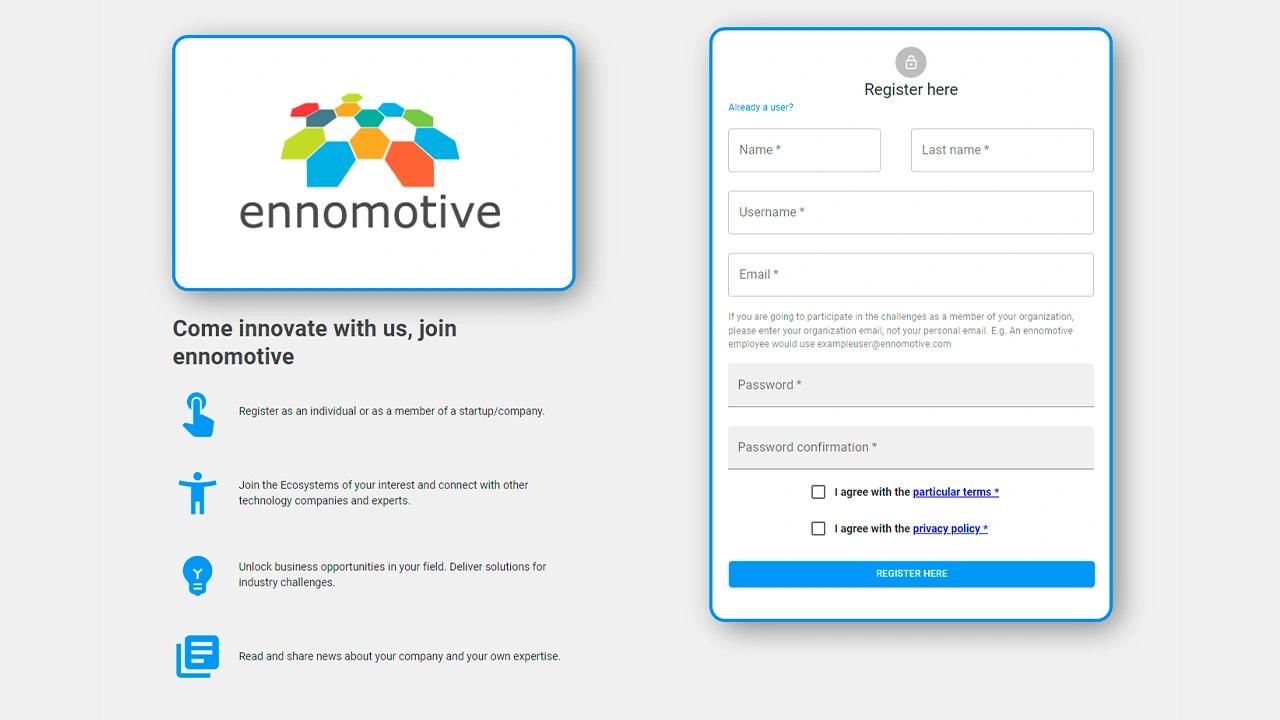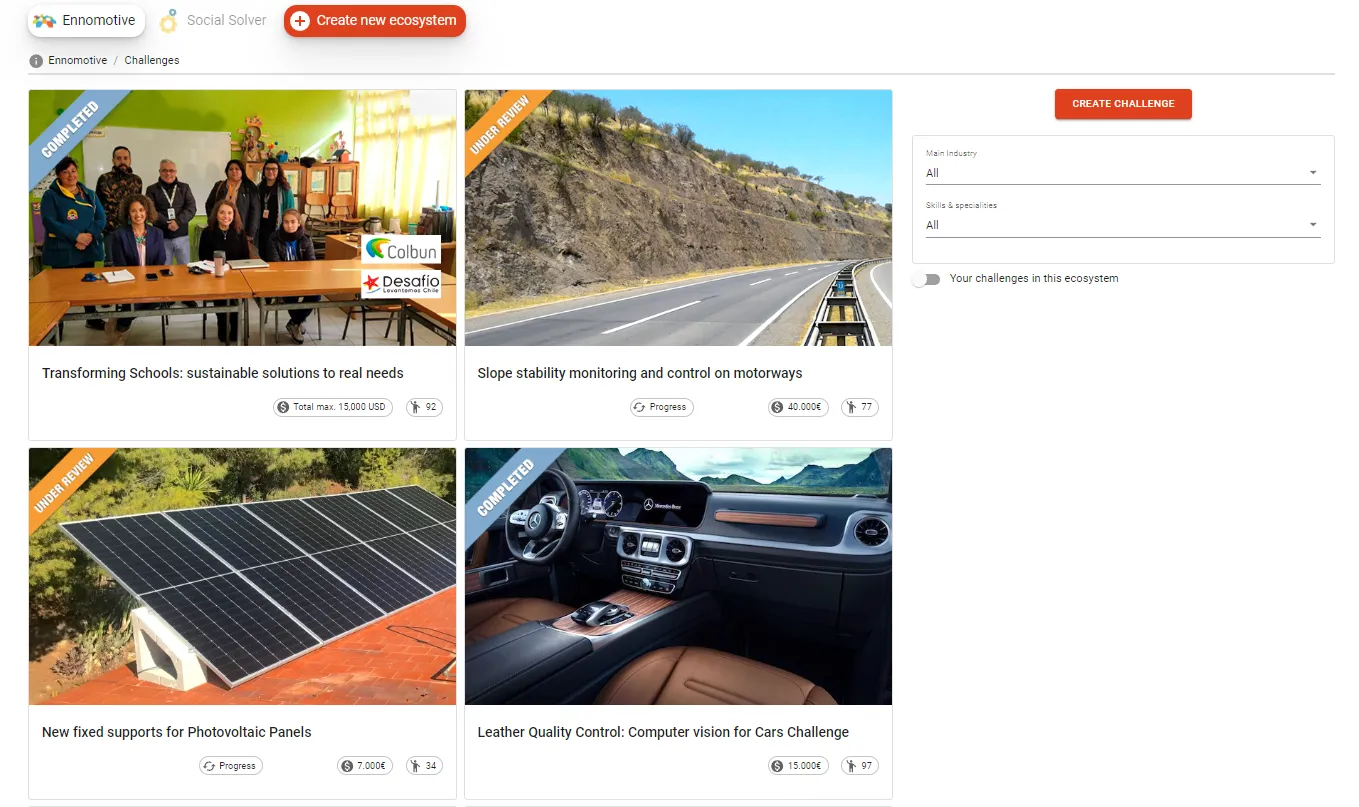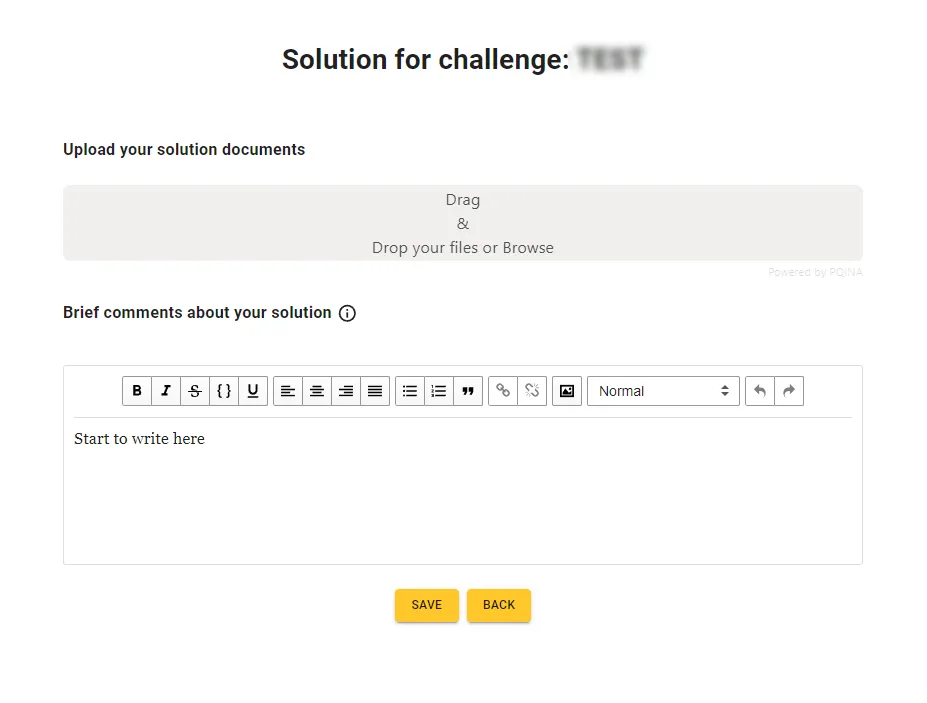Background
Our client, a leading company in the raw-material extraction and production of derivatives, is looking for a safe and efficient system to cover the materials stored in outdoor heaps.
Although there are references to the use of liners to cover materials in bulk, the covering process is manual, complex and not very efficient.
The challenge
On the mineral-processing plants it is necessary to have enough stock of the different minerals to have the plant working 24/7.
These plants are usually located near sea harbours or in the very harbour to make the transportation of the minerals on boats from the mines easier.
Next to the production plants, there are big open fields called mineral parks where different materials are unloaded and stored outdoors, waiting to be processed in the plant. These are aligned in different lines with each material forming a heap, although the unloading spot depends on the available spaces at the time.
This way, heaps of different sizes are formed. As a reference, here are the sizes of two standard heaps:
- Heap 1: 20 m tall, 330 m long and 41 m wide.
- Heap 2: 4 m tall, 140 m long and 41 m wide.
The most usual height is 13 to 15 m.
The heaps are constantly moving for loading and unloading. Depending on the material they are made of, a heap can be consumed in a matter of 3 days or several weeks.
For the unloading of minerals and its subsequent loading for the processing in the plant, transportation belts are used. For the unloading and subsequent loading (see annex), stacking cranes with bucket wheels are used (called stacker-reclaimer). They slide on rails like port cranes.
The possibility of covering the material heaps with liners is being explored, with the goal of protecting the material from the rain and/or strong winds.
Although this solution has been implemented in some companies, using conventional liners and putting some weights on top, is currently presenting some risks that make it not feasible for the client:
- Safety. The liners are placed manually. This implies some risk, since there are people climbing up 15m-tall heaps to place both the liner and concrete-filled tyres that act as weights, preventing it from flying away (see annex).
- Effficiency. The liners are very heavy and require a lot of human labor, which slows down the operation of covering and uncovering the heaps for its consumption.
- Feasibility. Weather conditions like strong winds do not make the placement of the liners feasible.
What we are looking for
The main goal of this challenge is to design an automatic or semi-automatic system to place and remove the liners in a simple way. The liners must remain on the heaps in case of windy weather conditions.
We are looking for commercial solutions that can be adapted to this application or the design of a basic engineering of new solutions.
A liner, or a similar material, is needed, since it is a physical barrier for the wind. This can be alone or in combination with other elements.
The available onsite spaces and facilities can be used, as well as the existing resources and machines (stackers-reclaimers). New commercial machinery or a new design can also be proposed, or a combination of all of them.
Modular designs can be submitted, and the height of the heaps can be limited to an optimal number, but this limitation can be a lower storage space that must be taken into account.
For the design characteristics, a maximum sustained speed of the wind of 90 Km/h and gusts of wind up to 120 km/h will be taken into consideration.
The solution may be a proposal of basic engineering that shows technical feasibility of the concept and includes references of economic estimation.
The client aims to launch a subsequent project to do a concept test of the solution at an industrial level.
Check the Annex 1 to see photos of the park and standard machinery.
Evaluation criteria
The solutions will be evaluated according to these criteria, in the following order:
- Safety of the solution (including the associated process)
- Technical feasibility
- Lowest initial investment (CAPEX)
- Lowest operational cost (OPEX)
Deliverables
This is a 2-round challenge with the following deliverables:
First Round
A PDF document with the description of the proposed solution, including the following:
- Specification of the cover (liner) and materials.
- Diagram of the new process and operation regime.
- Design of the new machines or associated structures.
- Required investment (CAPEX) and operational costs in man-hours (OPEX) estimation.
- Evidence of feasibility for the proposed solution
Please send the description of your solution in a structured way (avoiding long texts), including index and lists. Back your solutions with images and sketches or diagrams. Generally, this will help us understand your solution better.
Second round
- A PDF document with the detailed design of the proposed solution including the following information:
- Specification of the necessary equipment and materials (including providers, if possible)
- Detailed design of the process
- Necessary calculations (mechanical, electrical...)
- Details of the cost of the solution (justified)
- Updated version of the required investment (CAPEX) and operational costs (OPEX) in estimated man-hours.
Timeline
1st round - 5 weeks + 5 weeks for evaluation
2nd round - 4 weeks + 3 weeks for evaluation
Particular terms and conditions
Confidentiality - According to general terms and conditions
Intellectual property - According to general terms and conditions. The client may be interested in the winner participating in the development of new proposed technologies through an IP exchange model. Also, already developed / commercial technologies may be submitted to solve this challenge but, in this case, the intellectual property will not be transfered.



